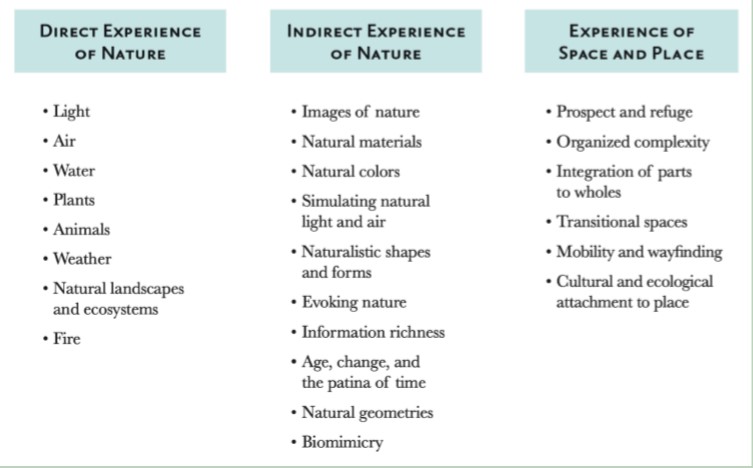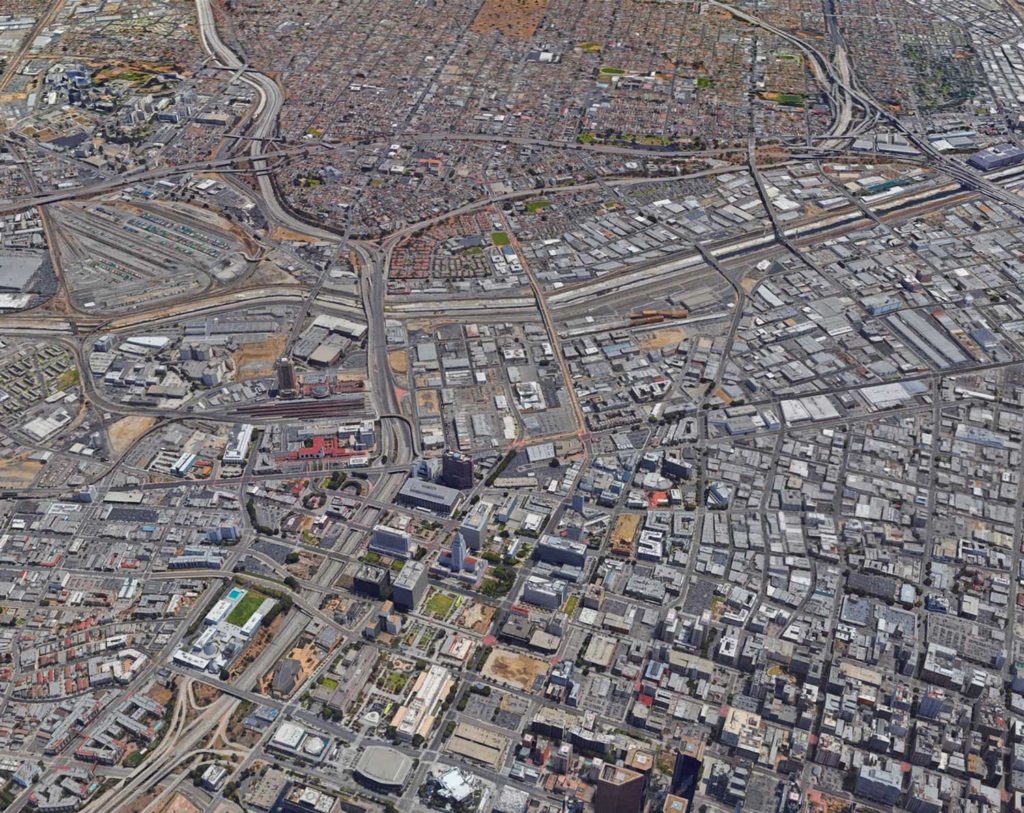While there is a long and studied history of biophilic design, what does that mean for design today?
The simple answer is: a lot. Biophilic design is rapidly gaining popularity as people become even more interested in creating healthier public spaces, commercial buildings, and homes that promote heathier living. The recent pandemic is only accelerating that trend.
But, how do you apply biophilic design? There are some overarching principles and attributes that guide how to approach biophilic design that apply across all different structures and spaces. Here we will look at those guiding principles and how to apply them to the build environment.
Design Parameters
You can approach biophilic design from many different angles and there is a wide assortment of approaches. One of the better and most defined approaches, comes from the Practice of Biophilic Design, which we have used to focus this blog.
Broadly speaking, you can define biophilic design within 5 key principles.
- Fosters a repeated and sustained engagement with nature
- Focuses on human adaptations to the natural world that have advanced people’s health, fitness and wellbeing.
- Encourages an emotional attachment to a setting and/or place.
- Promotes positive interactions between people and nature that encourage responsibility and stewardship for the human and natural communities.
- Drives towards ecologically connected, mutually reinforced and integrated solutions.
Within the principles, there are different ways or levels of how you experience biophilic design:
- Directly
- Indirectly
- Spatially (place and space)
 To simply demonstrate the difference, let’s look at an example of the different ways a flower might be incorporated into biophilic design:
To simply demonstrate the difference, let’s look at an example of the different ways a flower might be incorporated into biophilic design:
- Direct—having a flowering houseplant in your home
- Indirect—Having a painting or sculpture of a flowering plant in your home
- Spatially—Having a light-filled sunroom that mimics the feeling of a flowering garden
Direct Experience of Nature:
This is the most obvious of the levels. It includes using the built environment to directly provide contact with the natural world. Below are some of the main elements that impact biophilic design and its importance:
- Light—Our bodies have a circadian rhythm that follows a daily and seasonal cycle. Providing access to natural light helps distinguish between day and night as well as different seasons.
- Air—Providing natural or simulated ventilation access to fresh air is comforting to humans
- Water—provides a multi-sensory benefit. It can be visually or aurally calming or both. It can vary from water elements like a fountain to an environmental location like waterfront or oceanside.
- Plants—Beyond some direct health benefits with having plants in your home, they also are one of the simplest yet most effective ways to bring nature into your home. One caveat is to focus on native vegetation rather than exotic ones for a variety of reasons.
- Animals—while pets are fantastic for many reasons, this refers to wild animals (with the possible exception of fish in an aquarium). While you cannot directly influence this, you can make your landscape more attractive to wildlife from birds to deer to even bears or reindeer. Things like birdfeeders or deer friendly planting to even technology driven solutions like webcams are helpful. (Just make sure that you provide a safe environment for them and you—including your family member pets)
- Weather—Being able to sense the weather is important. From being able to step outside onto a deck to see what the weather is doing, to simulating ideal weather conditions like air flow, temperature and humidity, weather plays a critical role in our well-being.
- Ecosystems—natural landscaping helps promote well-being. Including a mix or plants, rocks, geological forms that mimic a natural environment have proven to be better than more formal and constructed landscapes (nothing against a formal English garden, though, which can be quite beautiful)
- Fire—while natural fire can be very dangerous, contained fire has been been a great man-made triumph that has provided safety and nourishment to us. Providing a refence to fire, including a fireplace or even simulated fire can be beneficial (make sure it is a direct vent or other safe and efficient fireplace for sustainability reasons)
Indirect experience of nature:
This includes any kind of representation of nature rather than nature itself. As such, you can often use design within any built environment to create an indirect experience to nature.
- Natural images—provide both emotional and intellectual benefits. The best benefit comes from the more complex, repeated textures and shapes of nature rather than isolated instances. Using different art mediums to achieve this a great way to accomplish it.
- Natural materials—provide both visual and tactile benefits. This includes stone, wood, cotton and leather among others. There is a connection to organic matter than man-made materials find tough to replicate.
- Natural colors—help promote calm and wellbeing and were historically used to help locate food, water and other resources. Since humans are primarily diurnal (active during the day), earth-tones or more muted colors are generally preferable, while bright pops of color can be used to evoke fields of wildflowers, sunsets or exotic locations.
- Simulated natural light and air—re-creating the ideal external environment inside is important. That can include using full spectrum lights and humidifiers/dehumidifiers to create a more comfortable living environment.
- Naturalistic shapes and forms—This evokes a more organic experience that replicates a living environment. This can be found in patterns, the repetition of patterns, or items. (it can be as simple as a leaf pattern to the polygonal patterns from the Islamic Golden Era.) Importantly, it is critical that it creates the feeling of a natural space vs. random elements.
- Evoking nature—this is related to natural shapes and forms but rather than directly using them, it means referencing or evoking their shapes. The Sydney Opera House is one of the most famous examples of this.
- Biomimicry—this is an interesting field of study that uses natural forms and functions to provide solutions to our needs.
Spatially (space and place)
This includes our emotions dictated by the environment in which we find ourselves. It defines itself based on the overall space and place of our surroundings ourselves rather than specific elements that create it. It is the sum total of the equation.
- Prospect and refuge—this is a yin/yang concept. The ability to feel both the opportunity of the natural setting while being protected from it. The feeling of being hugged by the calming and comforting elements of mother nature while being protected from her most extreme and destructive tendencies that lash out at you.
- Organized Complexity-One of the miracles of nature is to be incredibly complex yet appear amazingly simple. Complexity can be jarring and promote feelings of confusion and anxiety if random and strewn about, but if organized or placed in natural patterns, then that same complexity can be stimulating and enriching instead.


- Integration of parts to the whole—the linking of spaces within the built environment while maintaining clearly defined edges and boundaries
- Transitional spaces—These are helpful to integrating parts to the whole. They provide the ability to move between spaces gently and naturally. Think of an estuary that sits between a river and an ocean. Beyond providing a transition, it creates its own environment that is one of the richest natural environments. In a home, it could be a screened in porch that is neither inside nor outside but its own space that links both.
- Mobility and wayfinding—Humans want to be able to clearly find their way along defined paths with an obvious entrance and exit. There is a primal need to know how to escape a confined space. Knowing how to move through a space relieves anxiety and confusion. Think about trying to move through a sprawling airport trying to catch a flight vs. finding your room in a typical hotel.
- Cultural and ecological attachment to place—Looking back through our evolution as territorial creatures, we hold a strong attraction to familiar places. It provides a sense of safety and comfort. The familiarity reassures us that things are okay. Culturally relevant designs help us understand our personal human relevance in the environment. Ecological connections help us similarly by establishing a level of comfort provided by recognizable geographies and native fauna and flora. This need helps explain our desire for conservation and the satisfaction it brings.
These guiding principles and elements are found both in large scale and personal built environments. Additional blogs following in this series will delve into both aspects.
